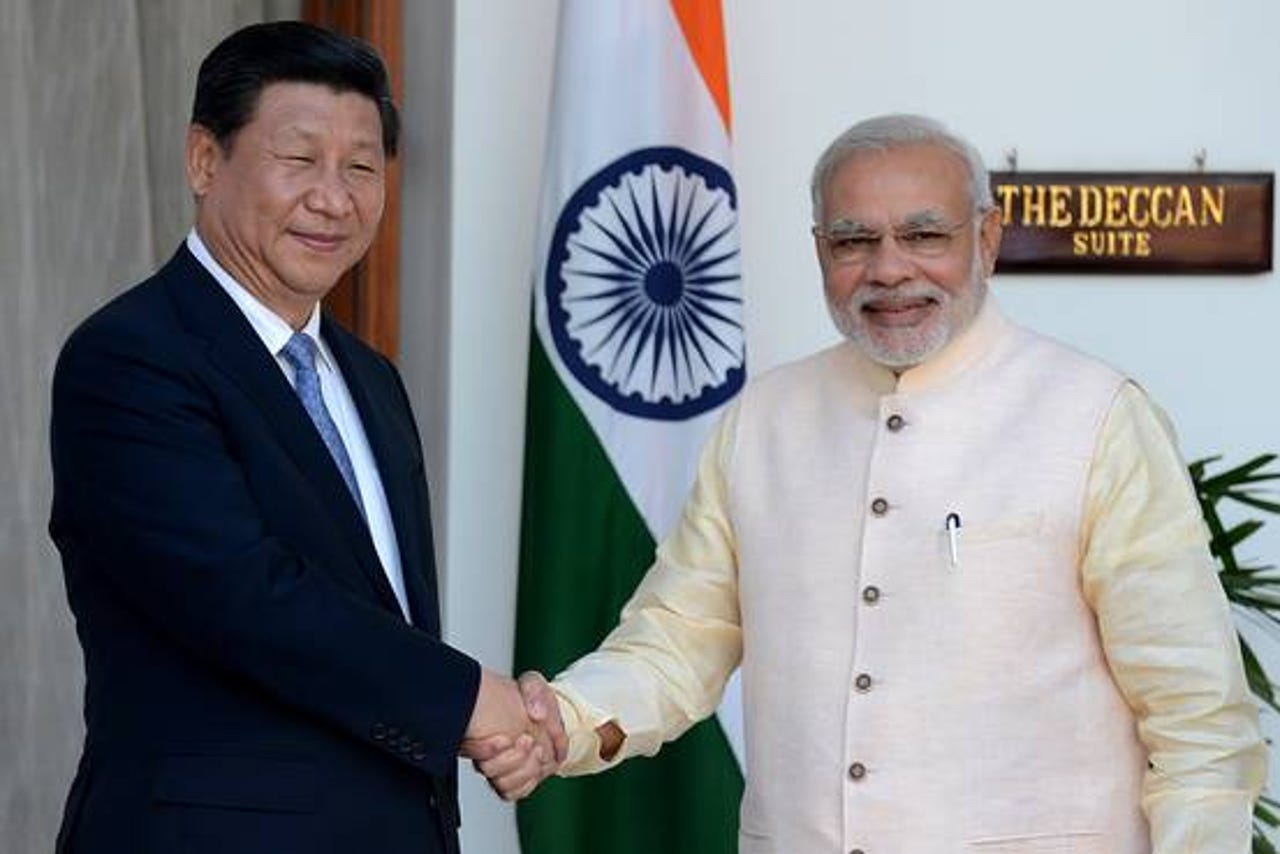Indian PM Modi tries tech diplomacy with post on China's Weibo

In an act that could be read as an example of tech-savvy diplomacy, at least for the South Asian subcontinent, Indian Prime Minister Narendra Modi, who is due to visit China for three days beginning May 14, reached out to Chinese citizens via China's largest chat service, Weibo, by opening his account and posting in Chinese, "Hello China! Looking forward to interacting with Chinese friends through Weibo."

It is something his youthful adversary Rahul Gandhi of the now-decimated Congress party would most certainly not have thought of, considering Gandhi joined Twitter only yesterday. By contrast, Modi has a staggering 12 million followers on Twitter, second only to Barack Obama and the Pope.
Modi's post was met with a deluge of responses, many of them friendly, welcoming him and inviting him to visit their provinces. Apparently, his post was instantly forwarded more than 4,700 times and got over 6,800 comments within just three hours of being posted.
Many responses, however, were anything but heart warming. The BBC said the most popular replies -- including the top five -- involved an exhortation to Modi to "return" Arunachal Pradesh, a region called "Zangnan" in China, which the country claims for itself. "Welcome, welcome! By the way, Zangnan is ours," claimed one missive. "The southern part of Tibet belongs to China, and Kashmir belongs to Pakistan," wrote a Weibo user. "Mr. PM please return the lands of other countries first before we start talking about how to get along well," exclaimed another.
Latest news on Asia
This is the peculiar schizophrenia that the two neighbours -- home to the largest two populations in the world -- exist in, victims of a tortured history, games of geo-political brinkmanship, and tussles over increasingly rare commodities such as water. India and China first became antagonists when the two fought a vicious border war in 1962, and border skirmishes and incursions continue to occur even today. India continues to house the Dalai Lama, the spiritual leader of Tibetans and the head of their government-in-exile, an act that hasn't exactly endeared itself to its neighbour, which invaded the region in 1950.
Meanwhile, China is eager to dominate India's backyard, and has been quick off the blocks to strike alliances with Bhutan and Sri Lanka through infrastructure projects and other economic agreements. Pakistan remains an old and staunch ally despite Chinese disaffection for the largely Muslim region of Xinjian in Northern China. That a stridently Hindu nationalist leader is making overtures to a country that is no shrinking violet when it comes to fierce nationalist pride is wonderfully ironic.
Yet, despite all the simmering ill will between the two nations, there is much room for cooperation. Realising this, Modi and Chinese President Xi Jinping announced a five-year plan in September last year for China to invest $20 billion in its neighbour in order to whittle down India's trade deficit. Both offer a humongous market for each other's goods. Yes, there is competition -- even Chinese smartphone companies such as Gionee have announced their plans to set up manufacturing plants in India, an unthinkable development 10 years ago -- but this may end up helping China in dealing with spiralling costs at home and a diversification of its manufacturing base. China is also facing an inevitable slowdown in its growth, and desperately needs India's consumers. India, in turn, could be a large beneficiary of Chinese know-how in building everything from power plant turbines to semiconductor fabricators.
And, in some ways, Modi is a perfect envoy to push the envelope of Sino-Indian cooperation further due to his tech savviness and "get-things-done" credentials. He is well known for having employed 3D holograms to reach people during his election rallies. Signing onto messaging app Weibo is a clever way to signal the need to do business with a leader such as himself who understands the tectonic currents of technology and trade, and who uses it on a daily basis rather than just paying lip service to it. That said, Modi may have some way to go to worm himself into the hearts of the Chinese. His twitter photo shows him determinedly, if not grimly, marching ahead, followed by bodyguards -- perhaps intending to radiate a "strong man" image, but one that doesn't exactly inspire warm and fuzzy feelings.
But if Modi manages to usher in a new era of cooperation and trade, both countries that have significant challenges ahead of them may just find themselves with new capital as well as consumers, and a hard-to-beat global economic partnership. At this point, though, this is just wishful thinking.